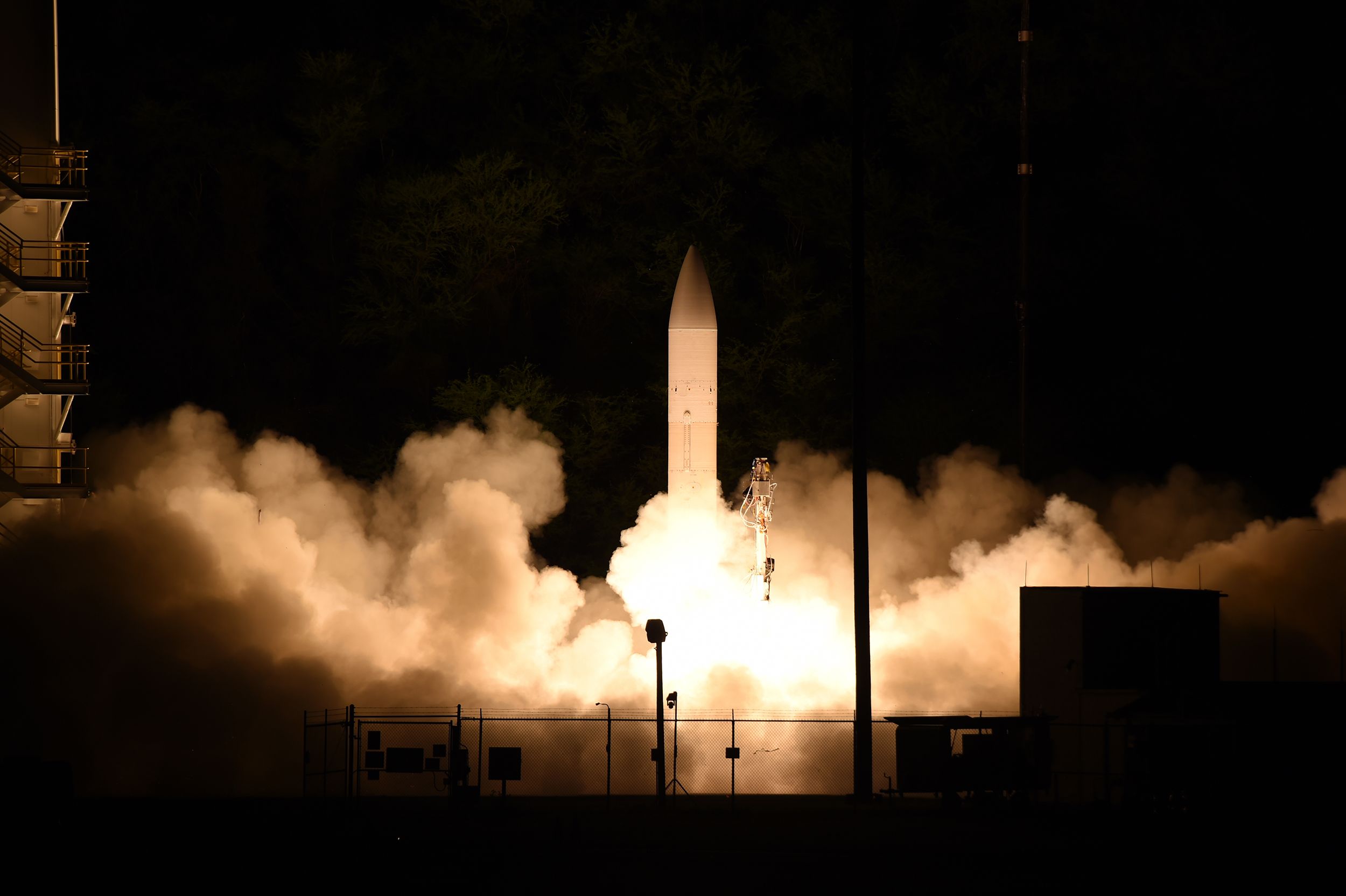State of U.S. Development of Ground-Launched Intermediate-Range Missiles

Rationale for New Ground-Launched Missiles
Suspension and withdrawal from the Intermediate-range Nuclear Forces (INF) Treaty on 2 February and 2 August 2019, respectively, opened the way for the U.S. to work on the introduction of previously banned ground-launched ballistic and cruise missiles with ranges between 500 and 5,500 km. Exit from the accord was a direct response to Russia’s years of violation of the accord but was also related to U.S. competition with China. Not a party to the INF Treaty, China has built the world’s largest arsenal of such missiles (around 2,000). The Trump administration has expressed interest in the deployment of new ground-launched missiles, first and foremost in Asia and potentially in Europe as well. The systems are to enhance deterrence of aggression against American allies but their range would be insufficient to defend those countries if launched from North America.
Unlike China and Russia, the U.S. has been working on only non-nuclear (conventionally-armed) variants of ground-launched intermediate-range missiles. This is a part of U.S. efforts to counter Chinese and Russian anti-access/area-denial capabilities (A2/AD). The latter include mainly land-attack, anti-ship and air-defence missiles, together with supporting systems, such as radars. U.S. military planners are concerned that, during a conflict, Chinese and Russian A2/AD systems would significantly impede regional operations of American forces, including sea and air missile platforms. As they are more difficult to detect than aircraft and surface ships, ground mobile launchers could, in turn, be more safely stationed within range of their targets and thus strengthen the U.S. abilities for quick counterattacks. The goal would be to complicate the aggression itself at its early stages and weaken the A2/AD systems, effectively making it easier for other U.S. forces to join the fight. Joint precision strikes from air, land, and sea and use of greater numbers of missiles and types would then increase the U.S. chances of neutralising the adversary’s A2/AD potential.
Missiles under Development
The first missile tested by the U.S. after its exit from the INF Treaty was a modified version of a sea-launched Tomahawk cruise missile (with a range of between 1,500 and 2,500 km). In August 2019, such a missile was launched and travelled more than 500 km from a ship-borne launcher provisionally installed on land. The U.S. Marine Corps plans to buy 48 of these Tomahawks in 2021 and introduce the system into service in 2023, once an operational ground launcher is developed. The Marines’ recognition of Asia as the main area of future operations indicates that the Tomahawks, capable of striking both ships and land targets, would be dedicated to this region.
The U.S. also had declared pursuit of a much faster ballistic missile with a range of between 3,000 and 4,000 km. Unlike the Tomahawk, it would not require deployment to Japan, South Korea, or the Philippines, as it could reach targets in China from the American island of Guam. In December 2019, the U.S. flight-tested a ballistic missile based on a rocket booster previously used as a target for missile defences at a distance of more than 500 km. However, the test served demonstrative purposes and the future of this programme is doubtful. In a 2021 budget request, the Trump administration officially cancelled the unspecified Mobile Medium Range Missile programme (which most likely would have had a range of between 1,000 and 3,000 km) for budgetary reasons. In turn, it prioritises the development of the much more technologically advanced (and more expensive) Long Range Hypersonic Weapon (LRHW), which could presumably reach 3,000-4,000 km. The LRHW was envisioned already when the INF Treaty was still in force since it was supposed to be formally compliant with the accord. While the booster rocket resembles a ballistic missile, it is armed with a warhead that glides in a non-ballistic, changing trajectory. The first battery of LRHW (four launchers with two missiles each) is to be ready in 2023.
Another system originally planned as compliant with the INF Treaty is the ballistic Precision-Strike Missile (PrSM). In 2023, PrSM is to start replacing the U.S. Army’s ATACMS missiles, first introduced in the 1980s and launched from HIMARS and MLRS mobile launchers. With the U.S. exit from the treaty, the range of the first version of PrSM may now be extended from 499 to some 550 km. Further, there are plans to develop a version with a range of about 700-750 km. In Europe, both versions of the PrSM would be capable of striking Russian land targets along NATO’s Eastern Flank. Use of the missile to defend the Baltic States and degrade A2/AD systems near their borders would require a launch from Poland or eastern parts of Germany (in case of targets in Kaliningrad and forces nearby). In Asia, PrSM would play mainly an anti-ship role, and both versions of the missiles would have a limited ability to reach China.
Political Challenges
So far, there has been no information indicating that the U.S. has started formal negotiations with allies on stationing new missiles on their soil. Such talks could be substantially impeded by the concerns of Asian governments and several NATO countries (e.g., France and Germany) that such deployments would be seen as provocative by China and Russia and, in some cases, these allied countries’ own publics. Due to their quick use capability, intermediate-range missiles are often perceived as well-suited for surprise first-strikes. The actual impact of these missiles on stability in relations with competitors would, however, depend on several factors, including quantity and deployment areas of particular types of missiles. Alternatively, the U.S. could rely on, aside from stationing a limited number of longer-range missiles on the relatively small Guam, deploying such systems to allied countries only in case of a crisis. The risk would be that the missiles might not reach their positions prior to the opening stage of conflict when they would be needed to play a crucial role.
The development of some of the new missiles has not garnered support from Democratic members of the U.S. Congress. They have criticised the Trump administration for leaving the INF Treaty and not continuing attempts to bring Russia back into compliance. They have unsuccessfully tried to block the funding for development of previously banned ground-launched ballistic and cruise missiles with ranges between 500 and 5,500 km. They have also questioned the operational and financial validity of pursing these missiles, given uncertain prospects for their stationing in Asia and Europe and the fact that the U.S. already possesses and works on other, INF Treaty-compliant, missiles.
Perspectives and Implications for NATO
Further U.S. work on ground-launched intermediate-range missiles and their procurement might be constrained if there is a change of administration and/or the composition of Congress after the November elections. This could also happen due to likely cuts to the American defence budget following the COVID‑19 pandemic, especially as the U.S. is also investing heavily in new air- and sea- launched missiles. The two ground-launched systems that seem certain to be further developed is at least a basic version of the PrSM with a range of about 500 km, and the LRHW. Neither programme has so far met resistance in Congress.
Clarification of the U.S. plans regarding ground-launched missiles will be important for further NATO discussions on the response to Russia’s violation of the INF Treaty and overall expansion of its missile forces. It is very likely that the U.S. will seek to deploy PrSM missiles in Europe, for instance, by rearming the Germany-based artillery brigade that already has MLRS launchers compatible with PrSM. At the same time, even the extended-range PrSM could not realistically threaten Moscow or Russian strategic nuclear forces. This would require an unlikely deployment of these missiles in forward and vulnerable positions in the Baltic States. Stationing of longer-range systems (LRHW, Tomahawk) would be more controversial in NATO. It is unclear, however, if the U.S. will seek such deployments at all, especially as American officials and military refer to those systems mainly with regard to operational requirements in Asia. In any case, clarity about the U.S. plans for global deployments of missiles will affect the scope of potential talks on limitations of missile forces. Several NATO countries will be interested in launching such initiatives. They may even become a condition for further enhancement of deterrence, especially deployment of U.S. missiles in Europe. It is in Poland’s interest that such arms-control concepts are developed on the basis of consultations within NATO and a joint allied assessment of the military utility of new ground-launched missiles.



